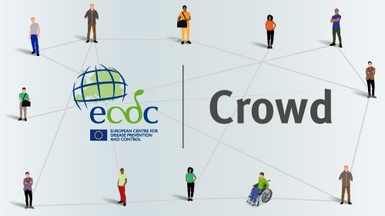News
Publications
Surveillance and monitoring
Surveillance and monitoring
Surveillance and monitoring
In 2025, ECDC celebrates 20 years of strengthening Europe’s defences against infectious diseases and protecting the health of over 500 million people across the EU.
Learn moreA new ECDC survey reveals that 3.1% of the residents in long-term care facilities had at least one healthcare-associated infection at the time of the study.
Read about the findings of the surveySurveillance and monitoring
Surveillance and monitoring
Surveillance and monitoring

This interactive dashboard provides a weekly integrated epidemiological summary for influenza, RSV and SARS-CoV-2.

The Learning Portal provides training courses and materials primarily for public health professionals working in infectious diseases.

Join the ECDC Crowd and work on improving and transforming health science one task at a time with your insights on study design, statistical analysis, data collection and interpretation



